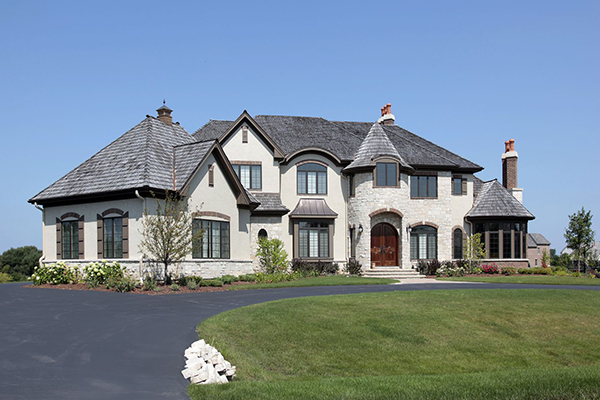 Last week’s economic news included readings on new and pending home sales and weekly reports on mortgage rates and new jobless claims.
Last week’s economic news included readings on new and pending home sales and weekly reports on mortgage rates and new jobless claims.
New Home Sales Exceed Expectations; No Growth for Pending Sales
September sales of new homes reached a 10-year high with a seasonally-adjusted annual rate of 667,000 new homes sold. Analysts said that high demand drove September sales past the expected rate of 555,000 sales and August’s reading of 561,000 sales of new homes. September’s reading was 19.9 percent higher than for August and was 17 percent higher year-over-year. September’s reading was 8.60 percent higher for year-to-date sales of new homes. This news may encourage builders to ramp up new home construction, but the widespread damage caused by hurricanes and fires will account for rebuilding thousands of previously-owned homes in the coming months.
The national average price for a new home was $319,700 as compared to $314,700 year-over-year. Real estate professionals said that it would take five months to sell all new homes currently available.
Pending home sales did not change from August to September. The Commerce Department reported no change from August’s reading of – 2.80 percent. Low inventories of pre-owned homes and affordability concerns may have sidelined would-be buyers as competition for available homes and home prices rose.
Regional results for pending sales were mixed. The Northeast region reported 1.20 percent growth in pending home sales, while the Midwest reported 1.40 percent growth and the West topped regional pending sales rates with 1.90 percent growth. The Southern region posted -2.30 percent fewer pending sales; hurricanes likely accounted for fewer contracts signed in September. Year-over-year pending home sales were lower in all regions.
Weekly Mortgage Rates, New Jobless Claims Rise
Mortgage rates rose across the board last week. Freddie Mac reported that averaged rates for a fixed rate mortgage rose by six basis points for 30-year and 15-year mortgages. The average rate for a 30-year fixed rate mortgage was 3.94 percent; the average rate for a 15-year fixed rate mortgage was 3.25 percent. The average rate for a 5/1 adjustable rate mortgage rose four basis points to 3.21 percent. Discount points averaged 0.50 percent for fixed rate mortgages and 0.40 percent for 5/1 adjustable rate mortgages.
New jobless claims rose to 233,000 claims, which matched expectations and exceed the prior week’s reading of 223,000 first time claims, which was a 44-year low. The jump in first-time claims is not due to layoffs as employers report shortages of skilled candidates to fill job openings.
What‘s Ahead
This week’s scheduled economic news includes readings on Case-Shiller home prices, construction spending and labor sector readings on private and public-sector employment. The national unemployment rate will be released along with weekly readings on mortgage rates and new jobless claims.
 Last week’s economic reports included minutes of the Fed’s Federal Open Market Committee meeting held in September along with releases on inflation and weekly reports on mortgage rates and new jobless claims.
Last week’s economic reports included minutes of the Fed’s Federal Open Market Committee meeting held in September along with releases on inflation and weekly reports on mortgage rates and new jobless claims. Fixed mortgage rates rose by two basis points last week as the average rate for a 5/1 adjustable rate mortgage dropped by two basis points. Construction spending returned to positive territory, but job growth dropped in public and private sectors. National unemployment was lower.
Fixed mortgage rates rose by two basis points last week as the average rate for a 5/1 adjustable rate mortgage dropped by two basis points. Construction spending returned to positive territory, but job growth dropped in public and private sectors. National unemployment was lower. Last week’s economic news included readings on housing starts, building permits issued and sales of pre-owned homes. The Fed’s Federal Open Market Committee issued its customary post-meeting statement and Fed Chair Janet Yellen gave a press conference. Weekly readings on mortgage rates and new jobless claims were also released.
Last week’s economic news included readings on housing starts, building permits issued and sales of pre-owned homes. The Fed’s Federal Open Market Committee issued its customary post-meeting statement and Fed Chair Janet Yellen gave a press conference. Weekly readings on mortgage rates and new jobless claims were also released. Last week’s economic readings release included reports on inflation, core inflation retail sales and retail sales excluding autos. Consumer sentiment, along with weekly readings on mortgage rates and new jobless claims were also reported.
Last week’s economic readings release included reports on inflation, core inflation retail sales and retail sales excluding autos. Consumer sentiment, along with weekly readings on mortgage rates and new jobless claims were also reported. Last week’s economic news was slim due to the Labor Day Holiday. Scheduled releases included the Fed’s Beige Book Report and weekly readings on mortgage rates and new jobless claims.
Last week’s economic news was slim due to the Labor Day Holiday. Scheduled releases included the Fed’s Beige Book Report and weekly readings on mortgage rates and new jobless claims.  Last week’s economic reports included readings on home prices, pending home sales and construction spending. Weekly reports on mortgage rates and new jobless claims were released along with labor-sector readings on Non-Farm Payrolls, ADP employment and National Unemployment.
Last week’s economic reports included readings on home prices, pending home sales and construction spending. Weekly reports on mortgage rates and new jobless claims were released along with labor-sector readings on Non-Farm Payrolls, ADP employment and National Unemployment. Last week’s economic news included readings on sales of new and previously-owned homes, Weekly readings on mortgage rates and new jobless claims were also released, along with coverage of Fed Chair Janet Yellen’s remarks at a conference in Jackson Hole, Wyoming.
Last week’s economic news included readings on sales of new and previously-owned homes, Weekly readings on mortgage rates and new jobless claims were also released, along with coverage of Fed Chair Janet Yellen’s remarks at a conference in Jackson Hole, Wyoming. Last week’s economic readings included the National Association of Home Builders Housing Market Index and readings on housing starts and building permits issued. Consumer sentiment for August was reported by the University of Michigan. Weekly reports on mortgage rates and new jobless claims were also released.
Last week’s economic readings included the National Association of Home Builders Housing Market Index and readings on housing starts and building permits issued. Consumer sentiment for August was reported by the University of Michigan. Weekly reports on mortgage rates and new jobless claims were also released. Job Openings, New Jobless Claims Rise
Job Openings, New Jobless Claims Rise